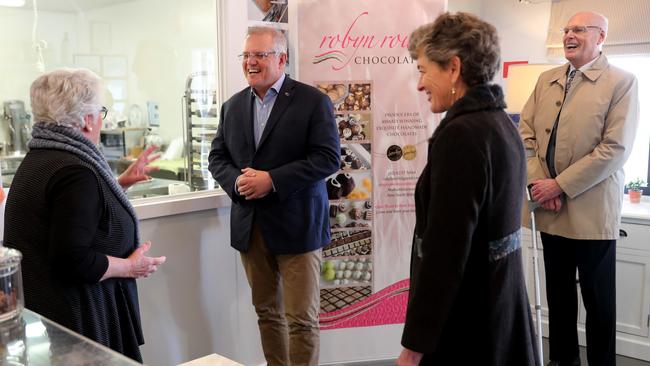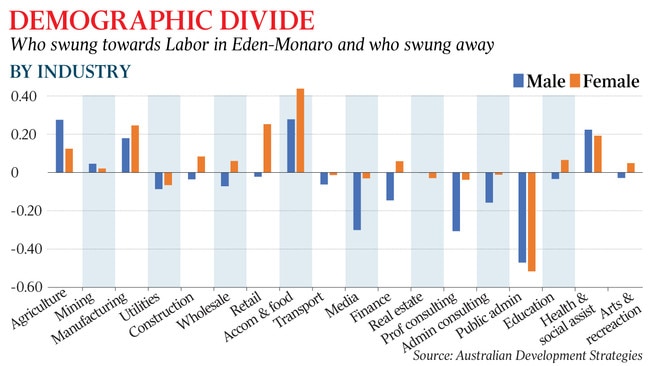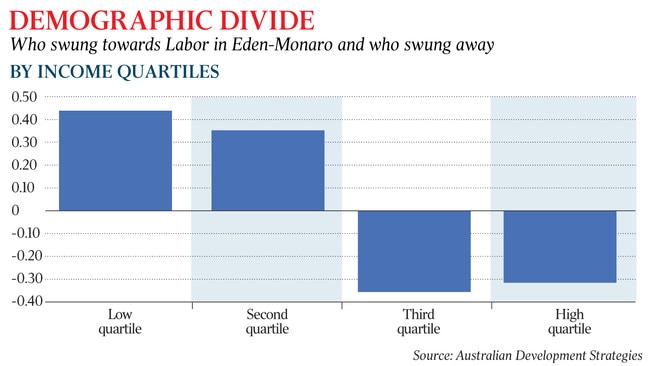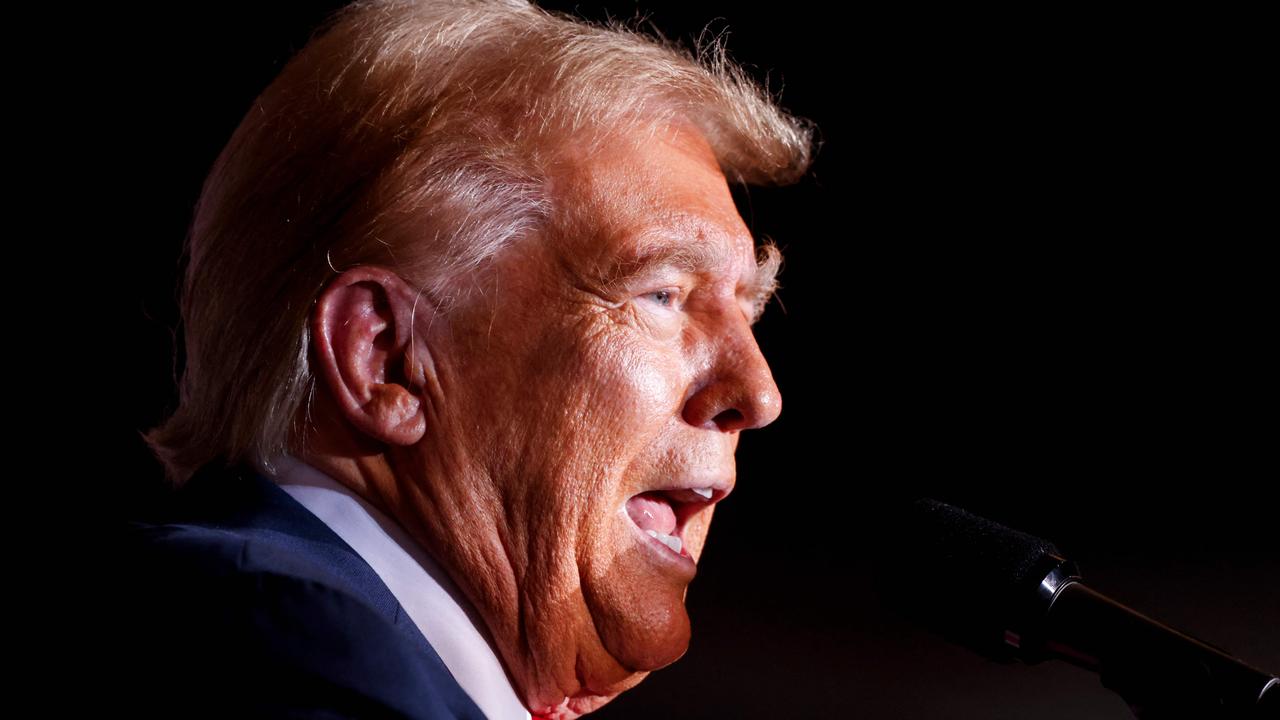Howard battlers look to be leaning Labor’s way once more

Older voters, along with those in the lowest income quartile on some form of transfer payment and workers in the accommodation and food industry, swung to Labor at the Eden-Monaro by-election, as the Liberal vote tanked among the traditional “Howard battlers” demographics.
A vote-weighted demographic profile of both the pre-poll and election day booths shows there was considerable overlap across these three demographics, which reinforced the pro-Labor swings.
It seems that many of these older voters, living in the coastal tourist resorts and retirement centres of Eden-Monaro — and presumably also in similar seats along the Australian coastline — had taken part-time jobs in accommodation and food to make up for losing their retirement incomes, due to ultra-low interest rates and the lack of any meaningful investment options for working-class retirees.
Most of these older and lower- income Australians were homeowners, having paid off their mortgages, but there were many families in the second income quartiles among these booths swinging to Labor, where voters affected by the COVID lockdown had lost their jobs as cleaners, labourers, service or sales workers or self-employed tradies, and were having trouble making relatively low mortgage payments of less than $1000 a month and experiencing serious levels of mortgage stress.
The (very) bad news for the Coalition here, especially in Queensland, is that when these two demographics are combined, we are looking at the 2020 version of the Howard battlers, the sort of rural working-class families who used to dominate our old Queensland political profiles back in the noughties.
We know this demographic very well indeed.
Crucial demographic
These Howard battlers re-elected the populist ALP premier Peter Beattie in February 2004 with 56.4 per cent of the two-party-preferred vote and then nine months later returned John Howard as the Coalition prime minister with 57.2 per cent of the 2PP vote. That’s more than one in eight Queenslanders switching their party loyalties within a year, and it also includes an awful lot of rural voters in other states.
At various times spanning almost three decades of state and federal elections, this Howard battler demographic has included a large bloc of low-income welfare recipients chasing cheaper housing on our urban fringes, as well as second income quartile male tradies, hospitality workers, renters, English-speaking migrants and traditional state ALP voters who like to split their votes between state and federal elections, just to keep their politicians on their toes.
They have voted for Beattie, Howard, Pauline Hanson, Bob Katter, Clive Palmer and, more recently, Barnaby Joyce. In Eden-Monaro, they voted for the Shooters, Fishers and Farmers and threw their second preference to Labor candidate Kristy McBain, rather than vote for a federal Liberal who took away their jobs. With this group, Scott Morrison has some ground to make up before the next election.

Bohemian bourgeoisie
Joining the Howard battlers swinging to Labor in Eden-Monaro, we found a familiar professional group the French used to call the bohemian bourgeoisie and the Liberals somewhat unwisely call the doctors’ wives, apparently not realising most doctors now tend to be women. It includes all health-trained professionals, now more than one in eight female workers, many of whom are self-employed. Some have been forced to stand down during the COVID pandemic, or have been unable to work through lack of PPE or social distancing guidelines, while being sidelined by most of the centralised state health bureaucracies, with the notable exception of South Australia. Like the Howard battlers, these health professionals just want their jobs back.
The demographics swinging to the Liberals included younger, aspirational, white-collar families, with third-quartile incomes, along with many top-quartile income professional families working in consulting, finance and IT. These families — often Catholic — have been among those least affected by COVID or the COVID jobs lockdown. They have chosen a field of study that has enabled them to gain two relatively secure family jobs — as public servants, clerks, professional consultants or managers, working in IT or management — to pay off a mortgage and send one or two younger kids to school. These groups have kept their jobs during COVID and so far are backing the government COVID response all the way.
National implications
When projected nationally, the demographics driving the booth swings in Eden-Monaro point to big swings to the Coalition in safe Labor inner-urban seats in Melbourne and Sydney, and significant swings to Labor in traditionally safe Coalition seats across suburban and regional seats in Western Australia, Queensland and Victoria.

Bear in mind that by-elections are only a snapshot of how individual candidates performed at a certain time under a specific set of circumstances, but Eden-Monaro is a pretty good representative sample of Australia, demographically, spatially and politically. And in these days of instant 600-person robo-polls, a real sample of 100,000 representative voters participating in a real ballot can provide warnings the major parties cannot afford to ignore.
The scary news for the Coalition is that it could lose even more ground on last year’s pro-Labor swings in some of the Melbourne seats it used to call home, such as Josh Frydenberg’s Kooyong and Goldstein. Labor also sees former safe Sydney seats lapse into the marginal column, including McMahon, Macarthur and Werriwa.
If similar demographic patterns to what occurred in Eden-Monaro emerged nationally, Labor could lose Lingiari (Northern Territory) and Lilley in Queensland but pick up Bass (Tasmania), Boothby (South Australia) and Chisholm (Victoria).
However, the margins are tight, so personal votes count and upcoming redistributions are likely to change many of these seats well before the next national poll.
Number crunching
While the total swing to the Coalition in Eden-Monaro, after preferences, was less than 0.5 per cent, the range of swings across the booths was 25 percentage points, from more than 9 per cent at Tilba near the family farm of Liberal candidate Fiona Kotvojs, to minus 16 per cent at Merimbula, in the middle of Bega Valley Council, whose former mayor was Labor’s candidate, McBain.
Across the seat and particularly in the more densely populated suburbs around Queanbeyan, about half of last year’s personal vote of 4 per cent to 6 per cent for Mike Kelly did in fact come off McBain’s primary vote in the form of a 3.3 per cent swing against her. About half of this went directly to Kotvojs, with her primary swing of 1.4 per cent.
But the rest of it leaked back to Labor through preferences, mainly from the Shooters, Fishers and Farmers, a populist party exploiting the declining support of the NSW Nationals among farm workers, which we’ve been seeing in state results for the past decade or so.
Last time we looked, the modelling showed the Nationals brand in NSW at the 2011 state level was worth about minus 5 per cent, which is pretty close to the vote scored by the Shooters, Fishers, Farmers in Eden-Monaro.

Lost opportunities
Where the Coalition campaign fell short was in its failure in the fast-growing urban overspill from Canberra. There were big swings to the Coalition among younger Coalition voters moving into Jerrabomberra and Googong but not enough of these new voters were on the roll and a smaller percentage of those who were enrolled turned out to vote.
Eden-Monaro had the same number of eligible voters this year as it did for the election last year — despite strong annual growth around Googong exceeding 4 per cent a year — and the actual turnout across the seat fell by 6000 voters. Those not on the roll or not voting were disproportionately Coalition voters.
The proof can be measured by the strength of Labor’s grassroots campaign in the postal vote results. The total postal votes cast increased over from just under 6000 last year to 12,653 this year. Last year, Labor polled 42.9 per cent of the 6000 postals and this year Labor polled 46.5 per cent of 12,653 votes. The Liberals would have won the seat narrowly with their 2019 share of the postal vote.
At the local level, Labor won the by-election with a stronger grassroots campaign, a more popular candidate and a bit of help from the weakened Nationals and the Shooters, Fishers and Farmers. The Morrison government has some work to do among Howard battlers on the urban fringes and in the regions and among female health professionals in the inner cities.
As for Labor, its lower-income blue-collar vote is holding up, but it’s in big trouble with its more aspirational heartland constituents.
Both major parties have ground to make up between now and the next federal election.
John Black is a former Labor senator for Queensland. He is executive chairman of profiling company Australian Development Strategies. The material referred to above can be found at www.elaborate.net.au.

